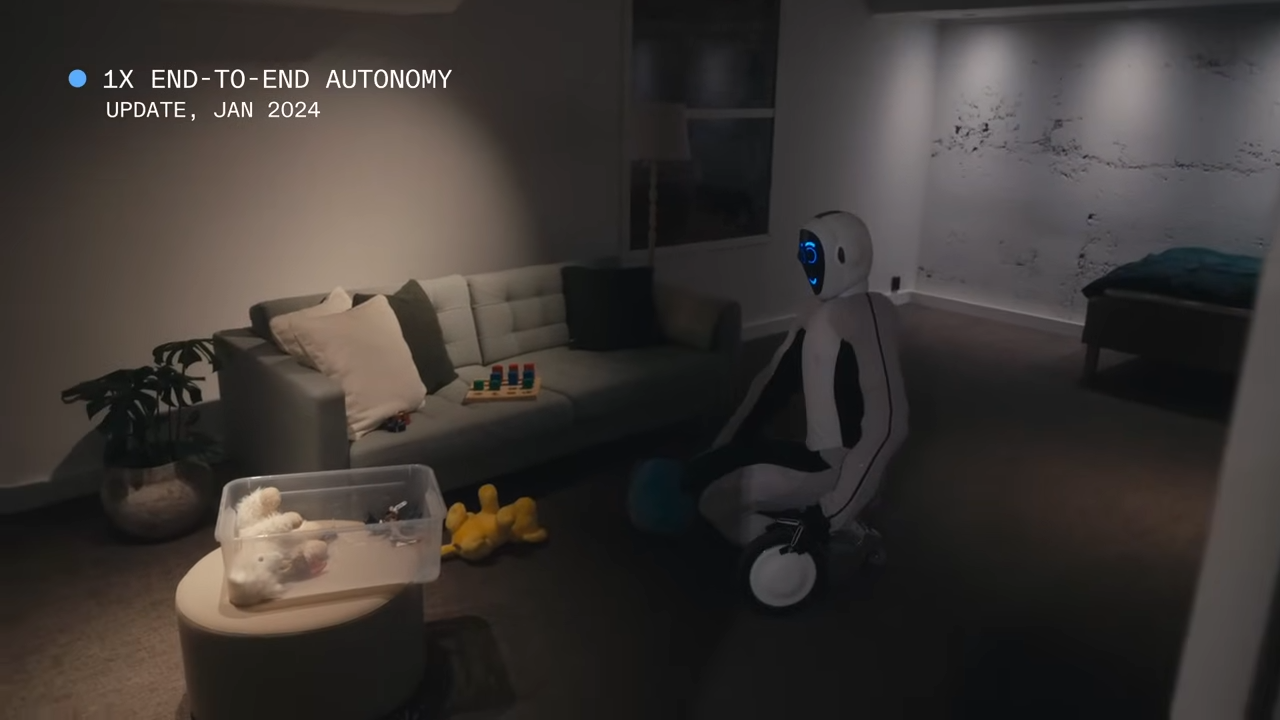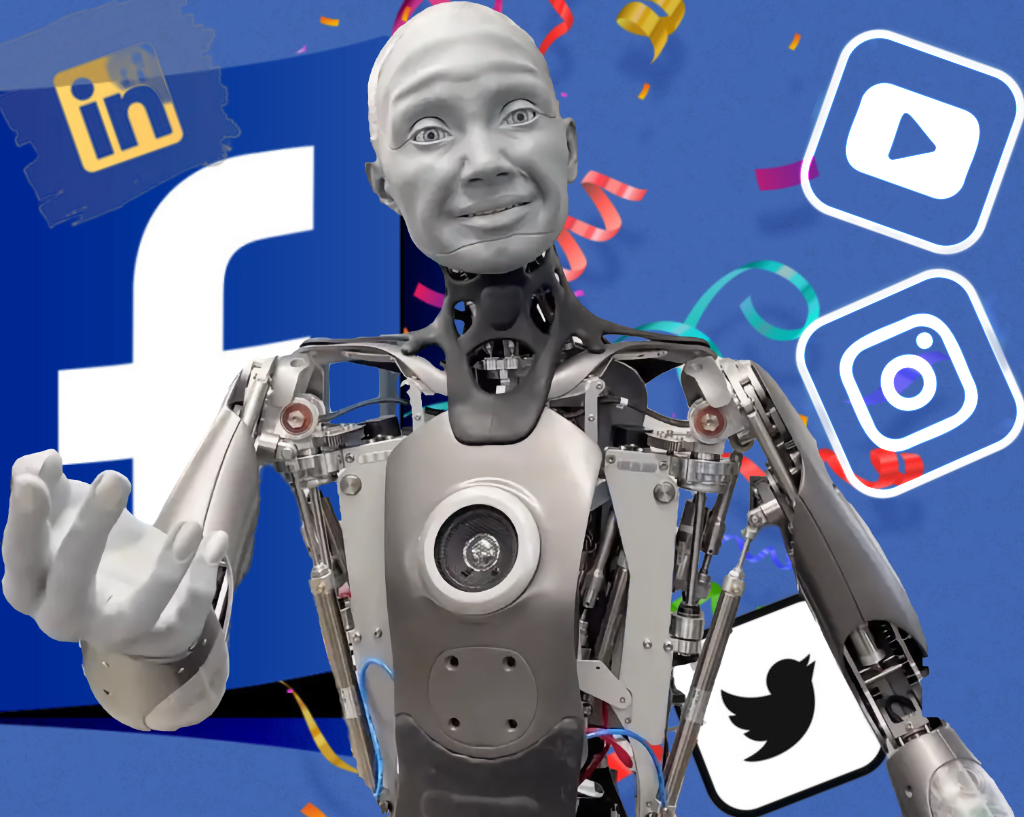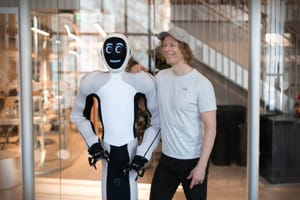Imagine a TV set of the 50s. Bulky and incredibly heavy, the remote, for the fewer and more expensive models that had one, was limited in its functionalities and as heavy as one of the first cellphones.

It took over 40 years to get to a TV that is as thin as a children's book and is fully transparent while holding all the functionalities. FORTY+ is not a European pants size post-Thankgiving; that is four decades.

Just a couple of years ago, the word robot was associated with cobots, those monstrous arms in factories that lift super heavy blocks of goods. And now more than ever, the word "bot" is associated with a humanoid that, within two years, will be taking over tasks that are either too dangerous for humans or jobs that are not wanted.
No breaks, no 401k, no unions, just pumping out your next Amazon purchase that you didn't know you didn't need. When I say no breaks, I mean that as soon the battery dies, just like a Roomba, it goes back to charge, and another unit picks up from where the other left off.
The year is not quite 2077, but the lines between robotic reality and sci-fi fantasy are blurring.
A recent $100 million investment in 1x Technologies, a Norwegian robotics company, has reignited the debate: Are android assistants about to become our friendly neighborhood chore machines?

Enter Eve: 1x's crown jewel, a non-bipedal humanoid robot with dexterous limbs and an AI brain promising to learn, adapt, and anticipate your needs. Forget clunky robotic arms or stationary sentinels; Eve navigates ramps, grasps objects, and might even lend a hand (or claw) with your laundry.
This isn't just about convenience. 1x envisions Neo becoming a seamless extension of the home, a helpful housemate who remembers your coffee preferences and engages in (hopefully) stimulating conversation. The potential benefits are alluring: a lighter domestic load, personalized assistance, and perhaps even companionship in a world increasingly yearning for human connection.
But before we break out the welcome mat for our robotic roommates, questions abound:
- The Price of Companionship: While 1x's investment fuels development, Neo's price tag and launch date remain shrouded in mystery. Will it be a luxury accessible only to the tech elite, or a democratizing force in household chores?
- The Ethics Equation: Can robots integrate seamlessly into our lives without compromising privacy, safety, or our very sense of human autonomy? Robust ethical frameworks and clear regulations are critical to preventing a dystopian future of robot overlords (a la Skynet, anyone?).
- The Robot Revolution: Will Neo and its robotic brethren usher in a golden age of leisure, or displace millions from their jobs? The answer hinges on thoughtful implementation and robust social safety nets, ensuring this technological leap forward doesn't leave others behind.
Beyond the hype, 1x's investment in Neo represents a significant milestone in the march of domestic robotics. The potential for android assistants to transform our households is undeniable, but responsibly navigating the ethical and societal implications is paramount.
To delve deeper, let's explore the data:
Table 1: Comparing Neo with other Robotic Contenders
| Feature | Neo (1x) | Optimus (Tesla) | Pepper (SoftBank) |
|---|---|---|---|
| Form | Bipedal | Bipedal | Wheeled |
| Dexterity | High | High | Limited |
| AI Capabilities | Advanced learning & adaptation | Natural language processing & social interaction | Basic task execution & emotional recognition |
| Intended Use | Domestic assistance | Industrial & general applications | Customer service & retail |
| Height | 1.86 meters | 2.1 meters | 1.2 meters |
| Weight | 86 kilograms | 150 kilograms | 28 kilograms |
| Speed | 12.4 km/hour top speed | 8 km/hour top speed | 3 km/hour top speed |
| Load | 20 kilograms carry capacity | 200 kilograms carry capacity | 1.5 kilograms carry capacity |
| Battery | 6-hour run time | 12-hour run time | 8-hour run time |
| note: all those specs change frequently. |
The projected growth of the Domestic Robotics Market from 2023 to 2028, assuming an average annual growth rate of 15%, would result in a market size of approximately $31.58 billion by 2028. This projection is based on an initial market

1x is working is also activating Neo, an evolution of Eve as it supposed to sport limbs and full hands.

Given the latest demonstration of EVE auto learning and full autonomy there's a significant chance that NEO could become the equivalent of Optimus for homes. The Japanese market would adopt such a feat of humanoin in a nano-bit. They are socially ready, their elderly population is prime for such a product and at a fraction of the cost of any care giver.
Affordability: A Game Changer?
Optimus, with its extimated sub-$20,000 price tag, already promised a significant departure from the astronomical costs typically associated with humanoid robots. But NEO, with its estimated $1200 price point, throws a game-changing wrench into the equation. This price range brings the dream of a personal robotic assistant within reach of a much wider audience. Imagine robots folding laundry, fetching groceries, or even providing companionship – all for a fraction of the cost of their industrial counterparts. The implications are vast, potentially revolutionizing how we interact with technology in our daily lives.
The speculation on the price raise a lot of questions on its vericity, hidden costs and the factuability of producing such a sophisticated machine at that price point. If that information is indeed confirmed, after this additional injection of cash we are looking at a robot in every home in the same fashion of a computer on every desk (Bill Gates). Nonetheless, we will be here documenting the evolution of 1x Neo.
The era of abundance is in sight now more than ever!






![From Tesla to BMW, humanoids are on their way [to your] home](/content/images/size/w300/2024/02/top_humanoids.png)